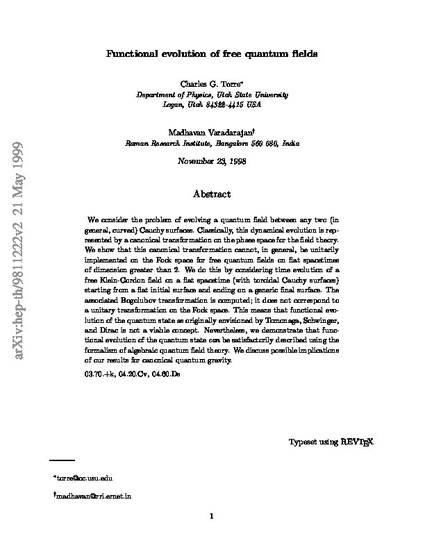
We consider the problem of evolving a quantum field between any two (in general, curved) Cauchy surfaces. Classically, this dynamical evolution is represented by a canonical transformation on the phase space for the field theory. We show that this canonical transformation cannot, in general, be unitarily implemented on the Fock space for free quantum fields on flat spacetimes of dimension greater than 2. We do this by considering time evolution of a free Klein-Gordon field on a flat spacetime (with toroidal Cauchy surfaces) starting from a flat initial surface and ending on a generic final surface. The associated Bogolubov transformation is computed; it does not correspond to a unitary transformation on the Fock space. This means that functional evolution of the quantum state as originally envisioned by Tomonaga, Schwinger, and Dirac is not a viable concept. Nevertheless, we demonstrate that functional evolution of the quantum state can be satisfactorily described using the formalism of algebraic quantum field theory. We discuss possible implications of our results for canonical quantum gravity.
